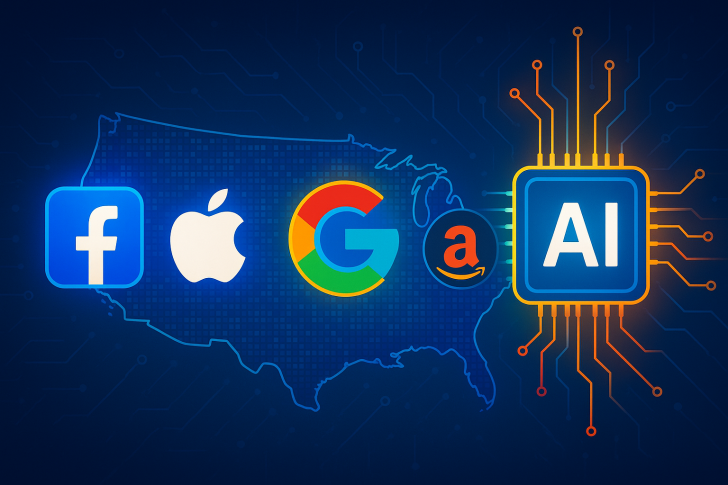Artificial intelligence isn't just changing search engines and social media—it's completely reshaping advertising. A decade ago, traditional media companies dominated ad spending in the United States. Today, three tech giants have taken over. Amazon, Meta, and Alphabet now control more than half of the $400 billion U.S. advertising market, up from less than 25% just ten years ago. Their rise isn't simply about scale. It's about algorithms, data, and the quiet revolution of AI-driven marketing that's making them nearly impossible to challenge.
AI-Powered Dominance
The advertising landscape has been completely transformed by AI-based targeting, predictive analytics, and real-time optimization.
What used to be a creative, human-driven process is now a high-speed, data-optimized machine powered by artificial intelligence. The three companies have built this dominance through distinct approaches:
- Meta uses massive AI systems to deliver personalized ads across Facebook, Instagram, and WhatsApp, analyzing billions of user actions to match content with intent.
- Google has evolved from simple keyword ads to fully automated AI campaigns like Performance Max, which handle bidding, targeting, and creative production on their own.
- Amazon has grown its ad business rapidly by using its retail and shopping data to connect product visibility directly to purchase behavior.
Together, they've created an AI-driven ecosystem where data and machine learning build advantages that keep compounding, leaving little room for anyone else to compete.
From Search and Social to Commerce and Everything
Ten years ago, Google and Facebook were the main digital ad players, dominating through search and social platforms. Now the picture looks completely different. Amazon's entry turned retail advertising into one of the fastest-growing sectors in digital marketing, using its unique access to shopping data and AI-based conversion tools. Meta is transforming its social networks into AI-powered discovery engines where the line between content and commerce keeps blurring. Alphabet, through YouTube and its generative AI tools, now helps advertisers automatically create optimized copy, visuals, and video campaigns. This shift signals something deeper—advertising is no longer just about placement. It's about prediction.
The Self-Reinforcing AI Loop
At the core of this transformation is a powerful feedback cycle. AI models learn from massive amounts of user data. Better insights lead to more effective targeting. Better targeting drives higher engagement and revenue. That revenue then funds even more advanced AI development. This loop allows Big Tech to continuously strengthen its position. The combination of AI innovation and data ownership has become the most powerful competitive advantage in modern business.
Regulation and Market Power
Regulators are starting to pay attention. U.S. and European authorities are examining whether AI-powered ad platforms give companies like Google and Meta an unfair advantage. But oversight is tough—algorithms evolve faster than regulators can respond. Smaller advertisers, meanwhile, find themselves increasingly dependent on AI tools from these same giants, like Google's Gemini Ads API or Meta's Advantage+. This dependence limits competition and consolidates control in the hands of a few companies that own both the technology and the intelligence behind it.
Can Anything Change?
While Big Tech's dominance seems overwhelming, emerging technologies could eventually shift things. Open-source AI models, decentralized ad networks, and blockchain-based data systems are being developed to give advertisers more control and transparency. But with Amazon, Meta, and Google collectively investing tens of billions annually in AI research, data centers, and infrastructure, their lead isn't going away anytime soon. The future of advertising looks increasingly automated, algorithmic, and concentrated in fewer hands.
 Peter Smith
Peter Smith

 Peter Smith
Peter Smith


